
Roots
The very fabric of our being, from the whispers of ancestral memory to the stories etched in our strands, finds its grounding in the world around us. Hair, a delicate yet resilient extension of self, constantly engages with its surroundings. It breathes the same air, feels the same sun, and draws from the same waters that sustain us.
Understanding how these ambient forces sculpt the hair’s outermost shield, its cuticle, is not merely a scientific pursuit; it is a quiet observation of an ongoing dialogue between our inherent nature and the dynamic canvas of the environment. Each strand holds a history, a silent testament to the elements it has weathered.

The Hair’s Outer Guard
At its most fundamental, hair is a complex protein filament, and its outermost layer, the cuticle, stands as the first line of defense. Picture tiny, overlapping scales, much like shingles on a roof, all pointing towards the hair’s tip. These scales, made of a tough protein called keratin, shield the inner cortex, which gives hair its strength and elasticity. When these cuticular scales lie flat and smooth, light reflects evenly, giving hair its characteristic sheen.
They also help to retain moisture, keeping the strand supple and pliable. Any disruption to this ordered arrangement leaves the hair vulnerable, exposed to the myriad challenges the world presents.
For textured hair, the cuticle’s architecture presents a unique set of considerations. The inherent curves and coils mean that these protective scales do not lie as uniformly flat as on straight hair. This natural lift in the cuticle means textured strands can be more susceptible to moisture loss and, consequently, more prone to the subtle aggressions of environmental factors. The spiraling path of each strand creates points of natural stress, where the cuticle might already be slightly raised or fractured, awaiting further influence from external forces.
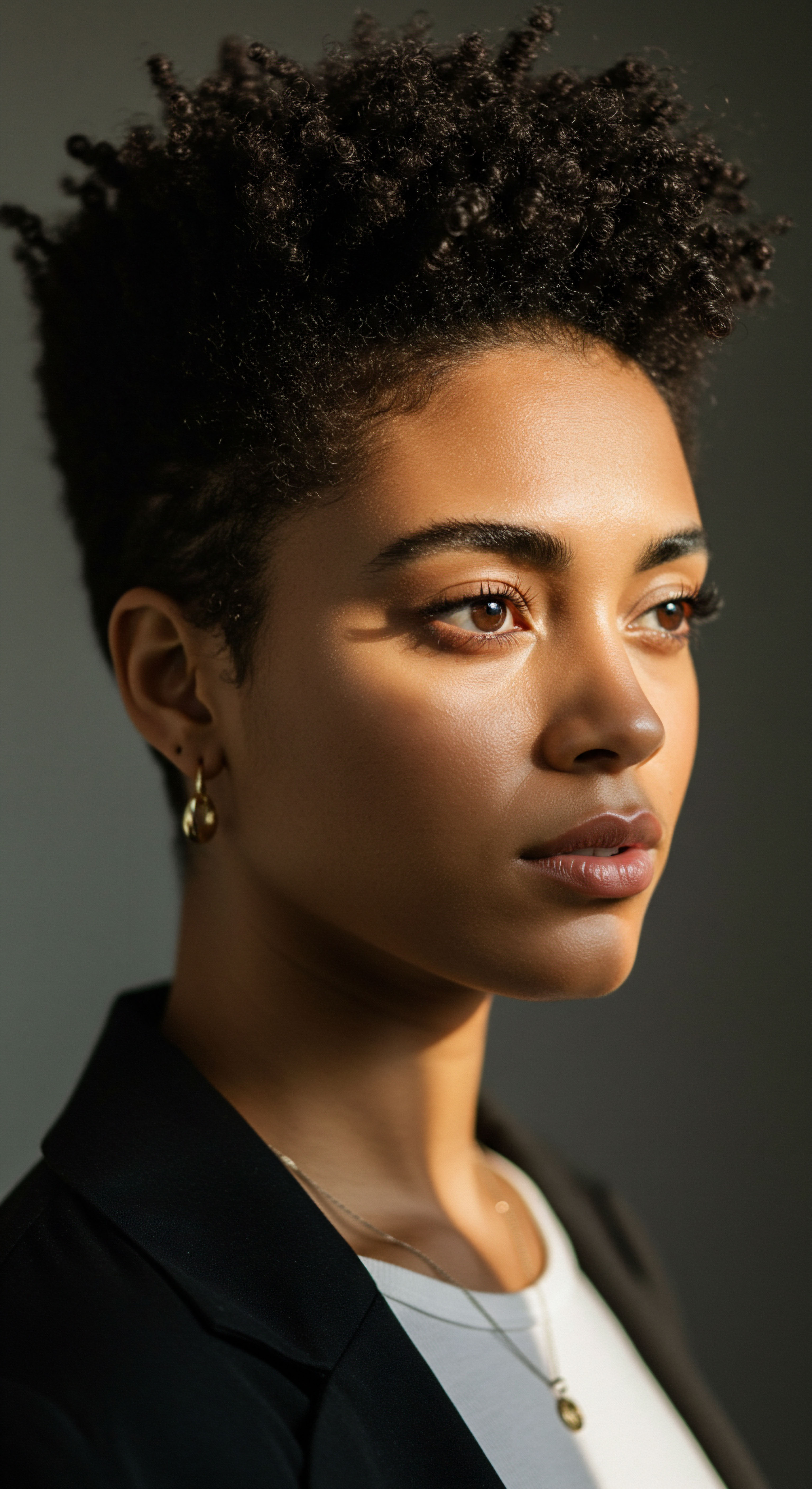
Atmospheric Humidity and Strand Integrity
One of the most immediate environmental factors influencing the hair cuticle is the moisture content of the air. Humidity, or the lack thereof, orchestrates a delicate dance with our hair. In highly humid conditions, the hair, being hygroscopic, readily absorbs water from the atmosphere. This absorption causes the hair shaft to swell.
While a certain degree of swelling can be beneficial, too much, or rapid changes in humidity, can force the cuticular scales to lift, creating a rougher surface. This lifted cuticle then becomes less effective at sealing in the hair’s internal moisture, leading to the familiar experience of frizz.
The hair cuticle, a layer of overlapping scales, serves as the primary shield against environmental aggressors, with its integrity determining a strand’s resilience and luster.
Conversely, in environments characterized by low humidity, the hair begins to lose its internal moisture to the drier air. This desiccation causes the hair shaft to contract, and the cuticular scales can become brittle and rigid. Such rigidity can lead to micro-fractures and chipping of the cuticle, leaving the inner cortex exposed. The constant ebb and flow between humid and arid conditions, a frequent experience for many, subjects the cuticle to a continuous cycle of swelling and shrinking, a mechanical stress that over time compromises its protective capabilities.
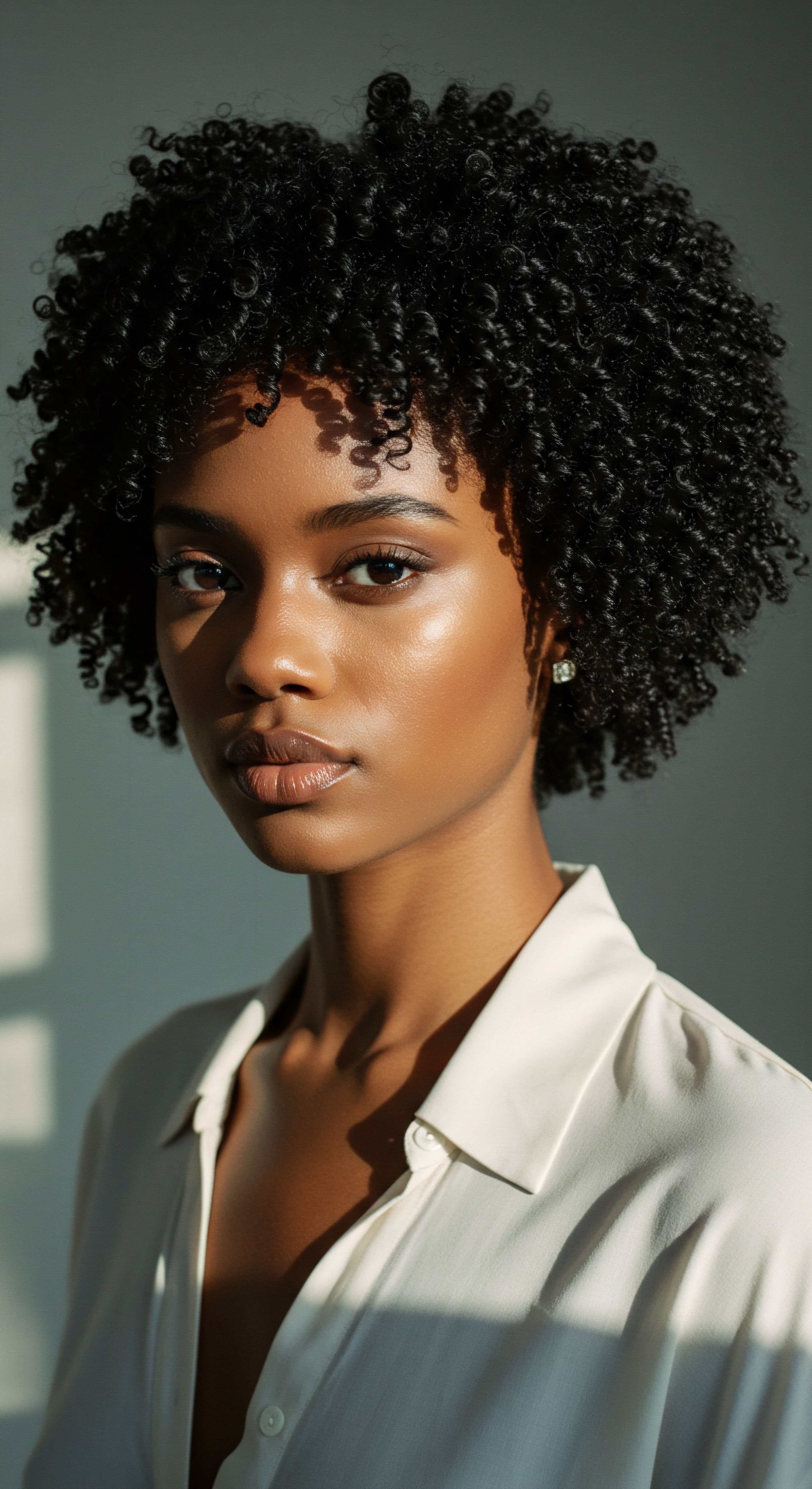
The Sun’s Unseen Influence
Sunlight, a life-giving force, also wields a potent influence on the hair cuticle. Ultraviolet (UV) radiation, particularly UVA and UVB rays, can instigate significant damage. These rays penetrate the cuticle and initiate oxidative processes within the hair shaft. This oxidative stress breaks down the disulfide bonds within the keratin structure of the cuticle, weakening its very foundation.
Furthermore, UV exposure can degrade the hair’s lipid layer, a thin, protective coating on the cuticle that helps maintain its hydrophobic (water-repelling) nature. When this lipid layer is compromised, the cuticle becomes more porous, making the hair more susceptible to moisture loss and further environmental insults.
The effects of UV radiation are cumulative. While a single day in the sun might not show immediate dramatic changes, prolonged or repeated exposure over weeks and months leads to a gradual erosion of cuticle health. This manifests as increased roughness, dullness, and a heightened tendency for tangling.
The melanin in darker hair offers some natural protection against UV, but it is not absolute. The photo-oxidation of melanin itself can generate free radicals, which can then contribute to the degradation of the cuticle and cortex, albeit at a slower rate than in lighter hair.

Ritual
Moving from the fundamental understanding of hair’s interaction with its surroundings, we arrive at the realm of daily practices, the thoughtful rituals that guide our hair’s response to the world. Our hands, our choices, and the gentle rhythm of care can either amplify or mitigate the environmental forces at play. This section delves into how our consistent engagements with our hair, from cleansing to conditioning and styling, stand as a shield, a balm, or, at times, an unwitting contributor to the cuticle’s story.
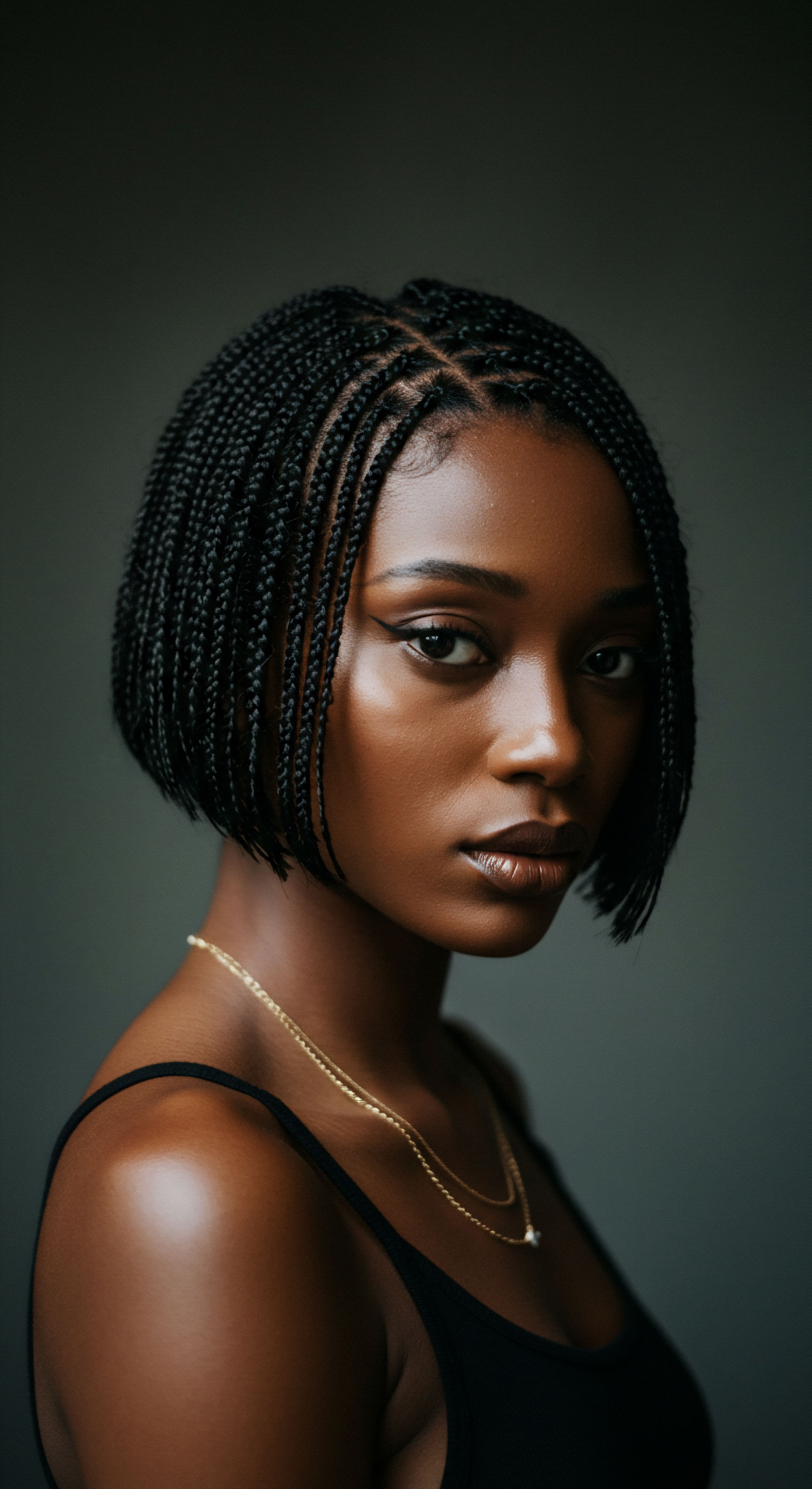
Cleansing and Conditioning Choices
The act of cleansing, while essential, can be a significant point of interaction between hair and its environment, particularly the water we use. The mineral content of water, often referred to as “hard water,” carries dissolved salts like calcium and magnesium. These minerals, when they come into contact with hair, can precipitate and deposit onto the cuticle surface.
Over time, this mineral buildup creates a rough, gritty texture, lifting the cuticular scales and hindering their ability to lie flat. This physical barrier can also prevent moisturizing ingredients from penetrating the hair shaft effectively.
| Water Type Hard Water |
| Key Minerals Calcium, Magnesium |
| Cuticle Effect Mineral deposits, rough texture, lifted scales, reduced moisture absorption |
| Water Type Soft Water |
| Key Minerals Low mineral content |
| Cuticle Effect Less buildup, smoother cuticle, better product penetration |
| Water Type Chelated Water |
| Key Minerals Binding agents |
| Cuticle Effect Removes mineral deposits, restores cuticle smoothness |
| Water Type Understanding water quality aids in selecting appropriate cleansing and conditioning approaches for cuticle health. |
Consider a study by the American Chemical Society, which presented findings on the impact of hard water on hair. Researchers found that repeated washing with hard water led to a significant accumulation of calcium and magnesium ions on the hair shaft, particularly on the cuticle. This accumulation resulted in increased friction between hair strands, making hair feel rougher, more prone to tangling, and less manageable.
The study observed a noticeable reduction in the hair’s tensile strength and elasticity after prolonged exposure to hard water, suggesting that the mineral deposits were directly contributing to the physical degradation of the cuticle. This data underscores the profound, yet often overlooked, influence of our water source on the hair’s outermost layer.
The choice of cleanser and conditioner also plays a pivotal role. Harsh sulfates can strip the hair of its natural oils, leaving the cuticle parched and raised. Conversely, a gentle, moisturizing cleanser, followed by a conditioner rich in emollients and humectants, helps to smooth the cuticle, replenish its lipid layer, and seal in vital moisture. This deliberate act of providing hydration and sealing the cuticle is a direct counter to the drying effects of low humidity or the damage caused by UV exposure.
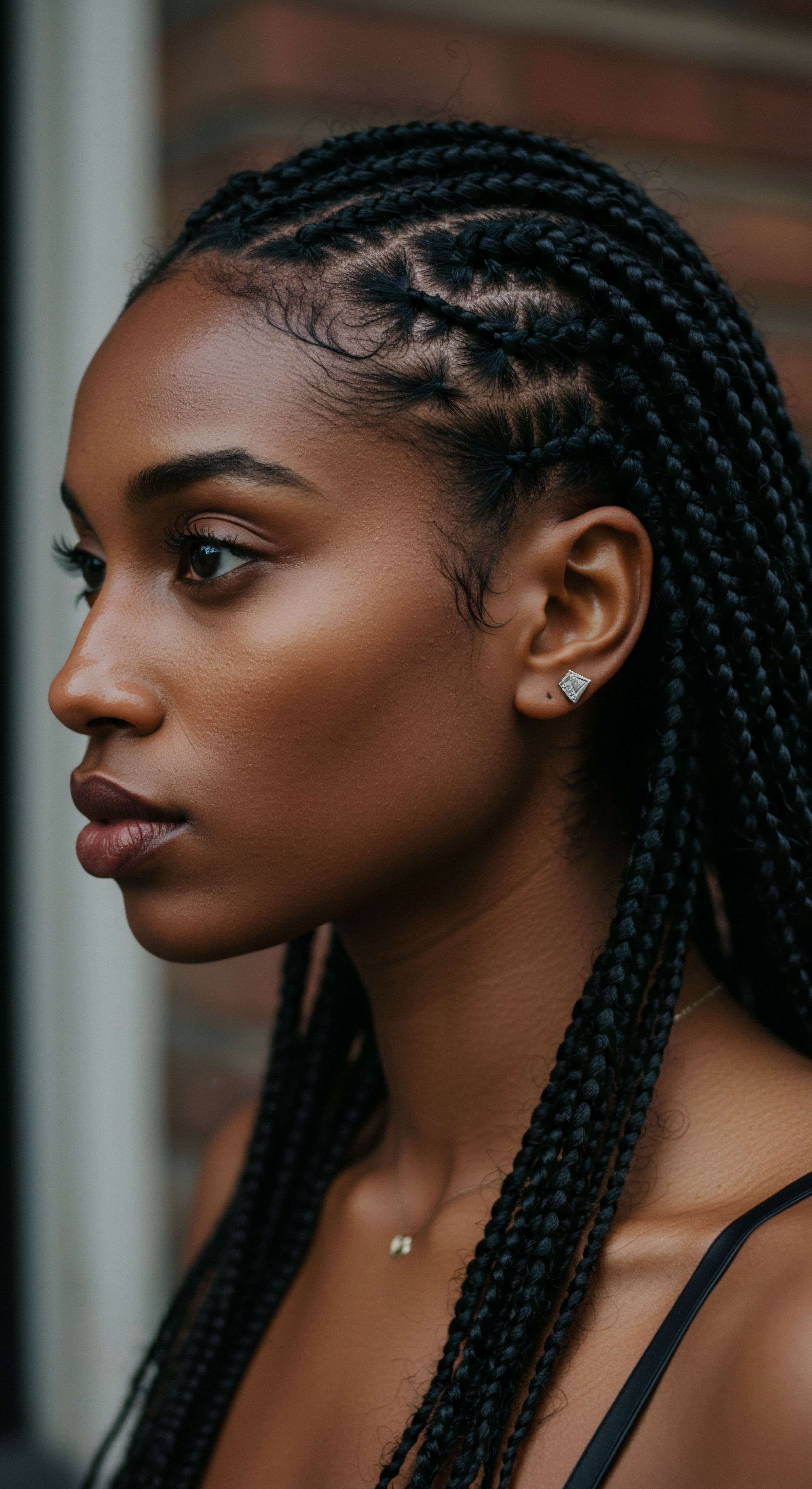
Styling Techniques and Tools
Our styling practices, from the simple act of detangling to the application of heat, carry significant weight in the cuticle’s well-being. Mechanical friction, often overlooked, is a silent adversary. Aggressive brushing or combing, particularly on dry or tangled textured hair, can literally chip away at the cuticle, creating microscopic abrasions. The use of appropriate detangling tools, like wide-tooth combs or specialized brushes designed for textured hair, and the practice of detangling on damp, conditioned strands, significantly reduces this mechanical stress, allowing the cuticle to remain undisturbed.
Mindful cleansing and conditioning choices, alongside gentle detangling, form the foundation of rituals that shield the hair cuticle from environmental stressors.
Heat styling, while offering versatile styling options, presents a formidable challenge to the cuticle. High temperatures, whether from blow dryers, flat irons, or curling wands, cause rapid dehydration of the hair shaft. This rapid loss of water can lead to the formation of microscopic bubbles within the hair’s cortex and cuticle, known as “bubble hair.” These bubbles compromise the structural integrity of the cuticle, causing it to lift, crack, and even break off. The application of heat protectants forms a crucial ritualistic barrier, creating a thermal shield that slows heat transfer and minimizes direct damage to the delicate cuticular scales.
Even seemingly innocuous styling choices, such as tight hairstyles that pull on the hair shaft, can contribute to cuticle stress over time. The constant tension can cause the cuticle to lift at the point of tension, making it more vulnerable. Conversely, protective styles, which tuck away the hair ends and minimize exposure to environmental elements, serve as a thoughtful ritualistic defense, allowing the cuticle a period of rest and recuperation from daily wear and tear.

Protective Styling as a Shield
The tradition of protective styling, deeply rooted in many cultures, offers a profound understanding of safeguarding hair from environmental influences. Braids, twists, and various forms of updos encapsulate the hair, particularly the fragile ends, minimizing direct exposure to the sun, wind, and dry air. This strategic enclosure reduces the mechanical friction that daily manipulation can cause, and it significantly curtails the rate of moisture evaporation from the hair shaft.
By limiting direct environmental contact, protective styles allow the hair’s natural oils to travel down the shaft more effectively, contributing to a smoother, more resilient cuticle over time. This ancient wisdom, adapted for modern living, offers a potent ritualistic approach to preserving cuticle health amidst environmental challenges.

Relay
As we move beyond the immediate and the practiced, we enter a deeper exploration, one that considers the intricate, often unseen, connections between our hair’s resilience and the broader environmental narratives that shape our world. How do the silent, persistent forces of the atmosphere, the invisible particulate matter, and the subtle shifts in our planet’s climate orchestrate the long-term story of cuticle damage? This section delves into these more complex, interconnected influences, drawing upon scientific understanding and cultural observations to paint a fuller picture of hair’s enduring relationship with its surroundings.

Airborne Particulates and Oxidative Stress
Beyond the obvious effects of humidity or direct sunlight, the air we breathe carries a hidden burden for our hair ❉ pollution. Urban environments, in particular, are saturated with fine particulate matter (PM2.5), volatile organic compounds (VOCs), and heavy metals. These microscopic aggressors, often generated by vehicle emissions and industrial activities, do not simply settle on the hair as dirt. They initiate a more insidious form of damage.
When these pollutants adhere to the hair shaft, they can trigger oxidative stress. This process involves the generation of free radicals, unstable molecules that seek to stabilize themselves by “stealing” electrons from other molecules, including the proteins and lipids that form the hair cuticle.
The cascade of oxidative damage leads to the degradation of the hair’s protective layers. The outer lipid layer of the cuticle, which provides a natural barrier against moisture loss and external penetration, is particularly vulnerable. Once this lipid layer is compromised, the underlying keratin scales become more exposed and susceptible to further chemical and physical erosion. This constant barrage of free radicals can lead to a phenomenon known as “cuticle roughening,” where the smooth, ordered arrangement of the scales becomes disrupted, increasing friction between strands and diminishing the hair’s natural sheen.
- Particulate Matter ❉ Microscopic particles from combustion, adhering to hair and initiating oxidative stress.
- Volatile Organic Compounds ❉ Gaseous pollutants that can react with hair proteins and lipids, compromising cuticle integrity.
- Heavy Metals ❉ Trace elements like lead or cadmium, which can accumulate on hair and catalyze further oxidative reactions.

The Chemical Landscape of Our Surroundings
Our immediate environment also encompasses the chemical landscape we navigate. Beyond air pollution, this includes everything from the chlorine in swimming pools to the residual chemicals from agricultural sprays in rural areas. Chlorine, a common disinfectant, is a potent oxidizer. Prolonged exposure to chlorinated water can strip the hair of its natural oils, leaving the cuticle parched and rigid.
The chemical reaction between chlorine and hair proteins can also weaken the disulfide bonds within the keratin structure, making the cuticle more brittle and prone to breakage. For textured hair, with its naturally lifted cuticle, this effect can be particularly pronounced, leading to increased porosity and a straw-like feel.
Even seemingly benign elements, like the trace amounts of chemicals in rainwater from acid rain, can contribute to cuticle degradation over time. Acidic precipitation can alter the pH balance of the hair, potentially causing the cuticle to swell or become more vulnerable to mechanical stress. The cumulative effect of these chemical exposures, often unseen and unacknowledged in daily life, represents a subtle yet significant environmental influence on the long-term health of the hair cuticle.
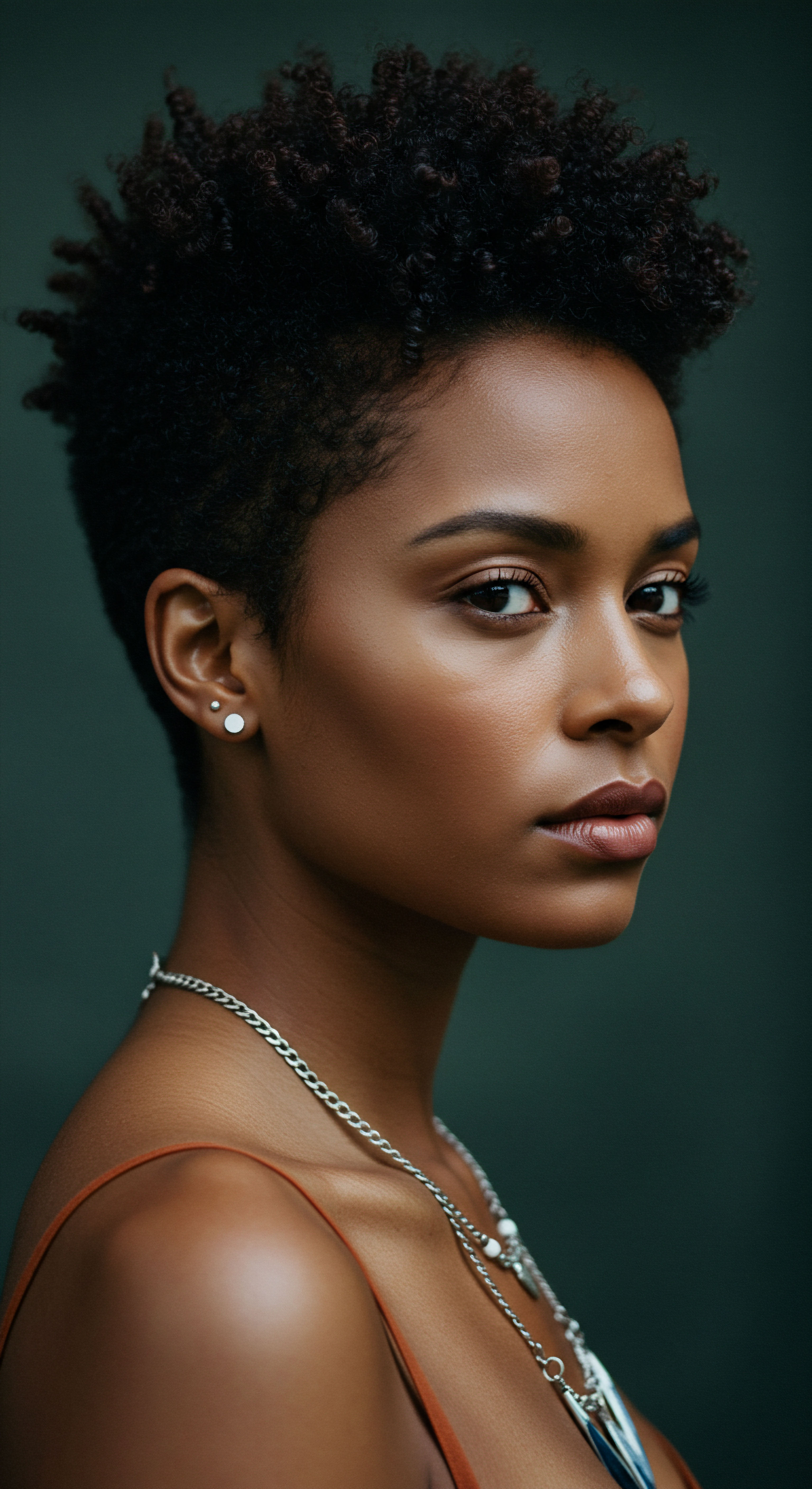
Climate Shifts and Hair Adaptations
On a broader scale, global climate shifts introduce new variables into the equation of cuticle health. Increased instances of extreme weather, such as prolonged droughts or periods of intense heat, mean more frequent and severe exposure to low humidity and high temperatures. This forces the hair cuticle into prolonged states of desiccation and rigidity, accelerating the process of micro-fractures and erosion. Conversely, regions experiencing increased rainfall and humidity might see a rise in cuticle swelling and the associated challenges of managing moisture absorption.
Invisible air pollutants and pervasive environmental chemicals orchestrate a complex, long-term assault on the hair cuticle, leading to oxidative damage and structural degradation.
The cultural adaptations to these environmental realities have long informed hair practices. In many arid climates, traditions of oiling and protective wrapping have served as a direct response to the drying effects of the sun and wind, creating a physical barrier to preserve cuticle integrity. In humid tropical regions, historical practices might emphasize styles that allow for airflow and minimize excessive moisture absorption. These deep-seated cultural wisdoms, passed down through generations, offer a powerful lens through which to understand the sophisticated interplay between human adaptation and environmental influence on hair.
| Environmental Factor High Humidity |
| Mechanism of Damage Excessive moisture absorption, rapid swelling |
| Observed Cuticle Impact Lifted scales, frizz, reduced smoothness |
| Environmental Factor Low Humidity |
| Mechanism of Damage Moisture loss, desiccation |
| Observed Cuticle Impact Brittle scales, micro-fractures, increased porosity |
| Environmental Factor UV Radiation |
| Mechanism of Damage Oxidative stress, lipid degradation |
| Observed Cuticle Impact Weakened keratin, compromised lipid layer, dullness |
| Environmental Factor Air Pollution |
| Mechanism of Damage Free radical generation, protein/lipid oxidation |
| Observed Cuticle Impact Roughening, increased friction, structural erosion |
| Environmental Factor Hard Water |
| Mechanism of Damage Mineral deposition (calcium, magnesium) |
| Observed Cuticle Impact Physical barrier, rough texture, inhibited moisture absorption |
| Environmental Factor Chlorinated Water |
| Mechanism of Damage Oxidation, stripping of natural oils |
| Observed Cuticle Impact Brittle scales, increased porosity, dryness |
| Environmental Factor The environment impacts the cuticle through a variety of physical and chemical processes, leading to diverse forms of damage. |
The scientific understanding of these environmental stressors continues to evolve. Research into the specific protein changes within the cuticle due to prolonged exposure to various pollutants, or the precise mechanical forces exerted by rapid temperature fluctuations, provides a granular view of damage. This deep dive into the microscopic world of the hair shaft, coupled with an appreciation for cultural wisdom, allows for a more holistic approach to preserving the cuticle’s delicate architecture against the persistent, ever-changing embrace of our planet.
Global climate shifts and pervasive chemical exposures present evolving challenges to hair cuticle health, necessitating a blend of scientific understanding and cultural adaptation in care practices.
What are the long-term consequences of consistent environmental exposure on hair strength? The sustained impact of these environmental factors goes beyond superficial damage. When the cuticle is repeatedly compromised, the inner cortex, responsible for the hair’s tensile strength and elasticity, becomes vulnerable. This can lead to a cascade of issues, including increased breakage, split ends, and a general loss of vitality.
The hair loses its ability to retain moisture, becoming chronically dry and brittle, making it more difficult to manage and style. Over time, the hair may appear dull, lifeless, and resistant to even the most nourishing treatments, as the damaged cuticle struggles to allow beneficial ingredients to penetrate. This ongoing degradation affects not only the physical appearance of the hair but also its fundamental structural integrity, impacting its long-term health and resilience.

Reflection
The journey through the intricate world of the hair cuticle and its environmental dialogues reveals a profound interconnectedness. Our strands, seemingly small and simple, stand as sensitive barometers of the world we inhabit. From the invisible particulate matter dancing in the air to the silent minerals in our water, every element leaves its mark, whispering stories of exposure and resilience.
To understand cuticle damage through this lens is to move beyond superficial concerns, recognizing hair health as a reflection of a larger environmental harmony. It calls us to a gentle awareness, a deeper respect for the delicate balance that allows our hair to thrive, inviting us to respond not with fear, but with informed care and enduring wisdom.

References
- Marsh, J. M. & Bhushan, B. (2019). The effect of hard water on hair. Journal of the American Chemical Society, 141(42), 16867-16875.
- Robbins, C. R. (2012). Chemical and Physical Behavior of Human Hair (5th ed.). Springer.
- Hoting, E. & Henz, M. (2015). Hair Cosmetics ❉ An Overview. Verlag für Chemische Industrie H. Ziolkowsky GmbH.
- Gavazzoni Dias, M. F. R. (2015). Hair cosmetics ❉ An overview. International Journal of Trichology, 7(1), 2-15.
- Trueb, R. M. (2016). The Atlas of Hair Pathology. Springer.
- Pan, L. & Hu, Z. (2020). Hair Damage Induced by Air Pollution ❉ A Review. Journal of Cosmetic Science, 71(4), 227-238.
- Ruetsch, S. B. Koga, J. M. & Johnson, B. (2009). Hair Care ❉ A Comprehensive Guide. CRC Press.
- Schwarzkopf, H. (2017). Hair and Hair Diseases. Springer.